Search
Search Results
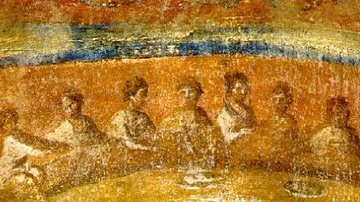
Image
Fractio Panis Fresco, Rome
Fractio Panis (or The Breaking of the Bread) fresco in the Greek Chapel in the Catacombs of Priscilla, Rome, Italy. Dated to the first half of the 2nd century CE.
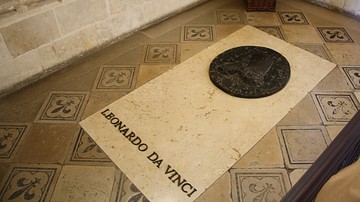
Image
Tomb of Leonardo da Vinci
The tomb of Leonardo da Vinci (1452-1519 CE) within the Chapel of Saint Hubert, Chateau d'Amboise, Amboise, France. The artist and inventor died at Amboise on 2nd May 1519 CE.
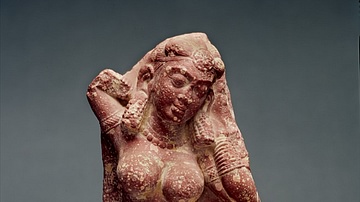
Image
Yakshi
Mathura region: Yakshi, ca. second century CE: sandstone. The William A. Whitaker Foundation Art Fund. Republished with permission from the Ackland Art Museum. Credit: 84.2.1 Unidentified Artist Indian, Mathura region: Yakshi, 2nd...
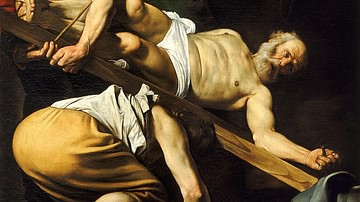
Image
The Crucifixion of Saint Peter by Caravaggio
Oil on canvas painting The Crucifixion of Saint Peter by Caravaggio, 1601 CE.
Cerasi Chapel, Santa Maria del Popolo, Rome.

Image
Madonna of Mercy, Orvieto
The Madonna of Mercy in the Orvieto (also known as Madonna of the Recommended) is a 14th Century CE tempura painting. This fresco is housed in the Chapel of the Corporal in the Orvieto Cathedral in Tuscany, Italy. The painting portrays...
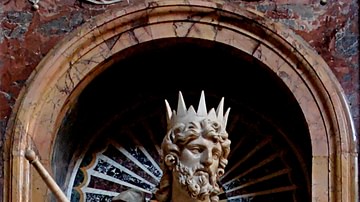
Image
King David
A statue of King David, second king of the ancient United Kingdom of Israel during the 10th century BCE. (By Nicolas Cordier, Borghese Chapel, Basilica di Santa Maria Maggiore, Rome)

Image
Ratification of the Canons of the Council of Trent
Pope Pius IV promulgates the bull Benedictus Deus, ratifying the Canons of the Council of Trent in 1564. Fresco by Pasquale Cati, 1588.
Altemps Chapel, Santa Maria in Trastevere, Rome.

Image
Ptolemy II Before Arsinoe II
Limestone relief from the Chapel of Ptolemy II at Tanis in the Nile Delta representing Ptolemy II facing Arsinoe II (San el-Hagar, ca. 275-250 BCE; BM reg. no. 1885,1101.5, inv. no. EA-1056). Courtesy of the Trustees of the British Museum...

Image
Lancelot
"Lancelot at the Chapel"
Illustration from the 1902 CE Book of Romance.
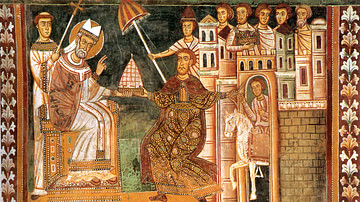
Image
Donation of Constantine
Sylvester I (served 315-335 CE) and Constantine the Great (r. 306-337 CE), San Silvestro Chapel at Santi Quattro Coronati, Rome.